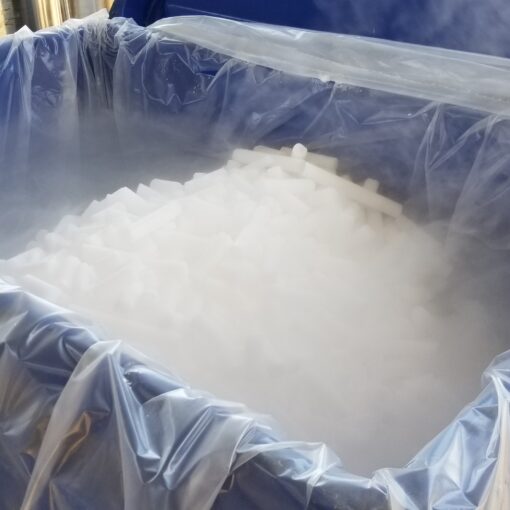The number one thing to consider when handling dry ice is,
Do not touch with bare hands.
Dry ice is extremely cold and can cause frost bite and cryoburns if not handled with proper PPE such as thick leather gloves, gloves designed for handling cryogenics or scoops and shovels that allow for handing the ice away from bare skin.
The second most important thing to consider is how to transport this product.
The rate in which dry ice transfers from solid to gas, is roughly 5-10 pounds of dry ice per 24-hour period.
This means that carbon dioxide gas is transferring to the air as the dry ice warms.
This could expose you to high levels of carbon dioxide gas if it is not stored or transported in a well-ventilated area.
NO VENTILATION CAN LEAD TO SUFFOCATION.
Finding a safe container to carry or transport in vehicles in simple terms is;
The container must not seal, or have an air-tight seal, as this can cause the carbon dioxide gas to build pressure and potentially violently rupture the container.
Never use containers made from materials that can break from rapid temperature changes.
• This includes GLASS, CERAMIC, and PLASTIC BAGS.
Always transport dry ice in a compartment away from the inside cab of the car, such as a trunk or truck bed.
NEVER, EVER CONSUME DRY ICE.
DO NOT EVER CONSUME DRY ICE, the irreversible health implications of swallowing dry ice are hard to imagine.
No part of your body is meant to be exposed to the temperatures of dry ice, especially not your mouth, throat or stomach.
Please be aware that dry ice, when used and handled incorrectly can harm or result in death.
For more information, please view the Safety Data Sheet for Dry Ice.




